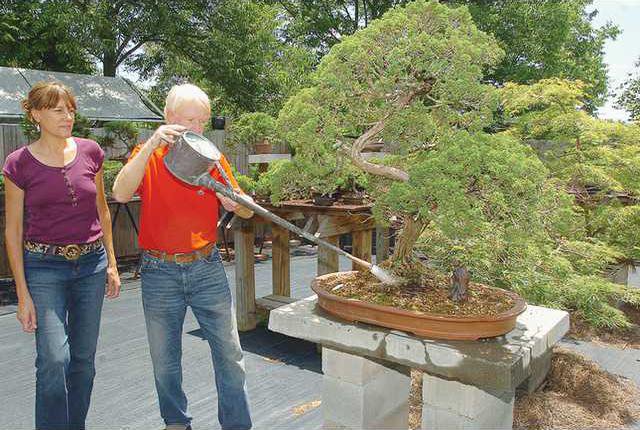A forest of California redwood trees lies in the middle of Northeast Georgia.
But these are not the gigantic trees that tower over humans on the California coast; this cluster of redwoods in miniature only reaches about a foot high and are known as bonsai trees.
Their home is Plant City Bonsai, a bonsai tree farm in Clermont. The place is filled with such miniature trees, which come from the United States and Japan.
Bonsai is the Japanese art of miniaturizing trees by growing and pruning them into aesthetic shapes in trays or shallow pots, according to Plant City Bonsai owner Steve Cratty.
Cratty said he was first captivated by the art in 1975, when "I went to a bonsai museum. It blew me away when I saw a tree not more than 6 inches high with little apples all over it.
"The rest is history," Cratty said.
Many of the trees appear otherworldly and ancient, with intricate branches and tiny leaves that evoke images of fairy-sized forests.
Some of the trees are as old as they appear: Cratty has a Japanese shimpaku juniper that is about 160 years old, which was passed down through generations of family in Japan before being auctioned off and shipped to Plant City Bonsai.
"It sort of demonstrated what bonsai's all about - longevity," he said, adding that most customers comment that, if they win the lottery, they're coming back to buy that tree.
Cratty said the price of an average bonsai tree can range from $10 to $100.
He added that many nurseries and customers may shy away from buying bonsais because of the responsibilities that come with maintaining the tiny trees. But Cratty said Plant City Bonsai has narrowed its bonsai offerings down to species that are not "finicky" for customers.
Cratty said a few "no-brainer" steps keep the trees in tip-top shape. The trees need to be watered every day and re-fertilized and pruned once or several times a year, depending on the variety of tree and how quickly it grows.
And the trees are rather tolerant of our temperatures; the tiny trees flourish outside during the summer and can brave the Georgia winters outdoors as well.
"There are so many reasons why people enjoy (the bonsai trees) ... they're like living sculptures," Cratty said.

